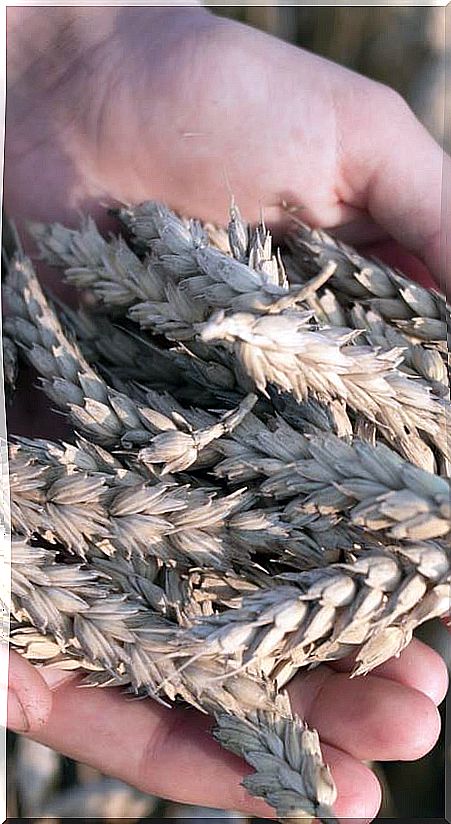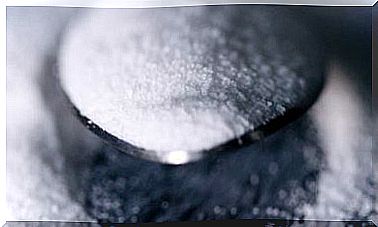Is Wheat Gluten Always Bad?
The gluten found in wheat, barley and rye can cause intolerance reactions, but it is not always harmful.

- What is gluten?
- Is gluten harmful?
- Does gluten have beneficial properties?
- Where is gluten found?
- Does modern wheat contain more gluten?
- Gluten-free cereals as an alternative
Gluten in wheat and other grains can cause intolerance reactions in some people, but it is not a poison.
What is gluten?
Gluten is not a single substance, but a mixture of proteins (prolamins and glutelins) made up of different peptides (chains of amino acids).
In the case of wheat, gluten constitutes 75 to 80% of its proteins, and is found in the endosperm of the grain along with the starch.
Is gluten harmful?
When gluten is digested it breaks down into peptides that can cause intolerance reactions (in this case we speak of celiac disease) or sensitivity in some people.
The precise cause of the reaction in these people is unknown. There may be genetic and environmental factors. It is estimated that 2 out of every 100 Spaniards suffer from celiac disease and it affects twice as many women as men.
In people with intolerance, an autoimmune-type reaction damages the lining of the small intestine and prevents it from absorbing some nutrients.
The intestinal damage often causes diarrhea, fatigue, weight loss, anemia and swelling, and can cause serious complications. A totally gluten-free diet usually solves the problems completely.
On the other hand, some people with autoimmune diseases can improve their symptoms if they eliminate it from their diet.
Does gluten have beneficial properties?
That’s how it is. Not only is gluten not a problem for most people, it can produce benefits.
In one study, 20 adults with hyperlipidemia (increased levels of cholesterol, triglycerides and lipoproteins in the blood) participated, who were divided into two groups.
The participants in the first group barely consumed gluten, while those in the second group ingested a very high amount, 78 g, which is well above the consumption in the population average (between 5 and 20 g).
After a month it was found that triglyceride levels (a cardiovascular risk factor) had decreased by almost 20 percent in the gluten-consuming group. The researchers had to conclude that gluten reduces the risk of cardiovascular disease.
Where is gluten found?
In addition to wheat, gluten is found in barley, rye, and other grains of the grass family.
The following is a list of different cereals and their gluten content per 100 g of flour:
- White spelled flour: 10.3 g
- White wheat flour: 8.7 g
- Barley (whole grain, husked): 5.6 gd
- Whole rye: 3.2 g
Does modern wheat contain more gluten?
The question often arises as to why the generation of our grandparents was practically unaware of gluten intolerance when today it is a frequent problem.
The increased incidence is often attributed to the dominance of crops by high-yielding wheat varieties, selected by farmers for their productivity and resistance.
However, researchers at the Technical University of Munich have analyzed the protein of 60 varieties of wheat grains grown between 1891 and 2010, and have found that modern varieties contain even slightly less gluten than old ones. Specifically, the prolamines content (one of the gluten fractions) has been reduced by 18%.
Generally speaking, the gluten content has remained constant for the past 120 years, according to German scientists.
On the other hand, the researchers observed that the annual rains have a greater influence on the gluten content than the chosen variety: in the rainy years the gluten content of the wheat increases.
However, it cannot be ruled out that the key to the increase in gluten intolerance may be found in some accompanying substance. For example, researcher Stephanie Seneff, from the Massachusetts Institute of Technology, suspects that ingesting the pesticide glyphosate favors the appearance of symptoms of gluten intolerance.
Gluten-free cereals as an alternative
People who are intolerant to gluten often have to avoid or cut down on foods that contain it, such as wheat. There are a variety of delicious gluten-free cereals and pseudo-cereals :
- Son
- Corn
- Rice
- Wild rice
- Amaranth
- Buckwheat
- Quinoa
- Teff
- Buckwheat
- Certified gluten-free oats
Scientific references:
- Katharina Anne Scherf et al. Wheat (Triticum aestivum L.) Breeding from 1891 to 2010 Contributed to Increasing Yield and Glutenin Contents but Decreasing Protein and Gliadin Contents. Journal of Agricultural and Food Chemestry.









